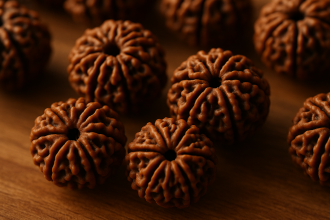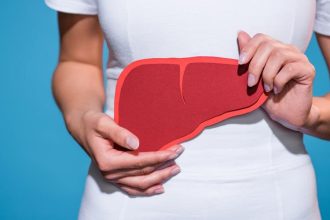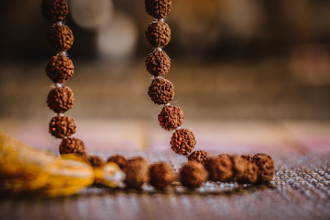
Rudraksha, the sacred seed of the Rudraksha tree, has been used for centuries by Hindus as a way to connect with their spiritual selves and to gain various health benefits. These seeds are believed to hold immense spiritual power and are considered a symbol of Lord Shiva. While some may dismiss it as a mere superstition, there is actually scientific proof to back up the benefits of wearing rudraksh.
Firstly, it is important to understand what a rudraksha is. It is a seed that comes from the Elaeocarpus ganitrus tree, found in the Himalayan region of India. The seeds have a unique surface texture with several deep grooves and ridges, giving them a distinct appearance. The number of grooves on a rudraksha determines its mukhi or face, which ranges from 1 to 21. Each mukhi is associated with a specific deity and has its own set of benefits.
Here are some of the benefits of wearing Rudraksha:
- Stress relief: Wearing Rudraksha can help reduce stress levels and promote a sense of calmness. Research has shown that Rudraksha has electro-magnetic properties that can have a positive effect on the human body, including reducing stress levels.
A 2005 study published in the Indian Journal of Physiology and Pharmacology found that wearing rudraksha beads on the skin led to a decrease in blood pressure, heart rate, and respiratory rate. The study concluded that rudraksha had a calming effect on the body and mind, making it an effective tool for managing stress.

2. Boosts immunity: Rudraksha has been found to have antimicrobial properties that can help boost immunity and protect the body against infections.
A 2011 study published in the International Journal of Pharmacy and Pharmaceutical Sciences found that the ethanol extract of rudraksha had antimicrobial activity against various strains of bacteria and fungi. This makes it a potentially useful tool in preventing and treating infections.

3. Improves blood circulation: Rudraksha can help improve blood circulation in the body, which can help reduce the risk of various health problems.

4. Enhances memory and concentration: Wearing Rudraksha has been found to improve memory and concentration levels, which can be especially helpful for students and professionals.
A 2014 study published in the International Journal of Pharmacy and Biological Sciences found that wearing rudraksha beads on the skin led to an improvement in cognitive function, including memory and attention.

5. Provides pain relief: Rudraksha can help provide relief from various types of pain, including headaches, back pain, and joint pain.
These are just a few of the many benefits of wearing Rudraksha. However, it’s important to note that not all Rudraksha seeds are created equal. Authentic and genuine Rudraksha seeds should be used to achieve the best results.
While these studies provide some scientific proof of the benefits of wearing rudraksh, it is important to note that more research is needed in this area. However, the centuries-old tradition of wearing rudraksha beads by Hindus is a testament to its effectiveness in providing spiritual and health benefits.
In conclusion, the benefits of wearing Rudraksha are not just based on spiritual beliefs, but also have scientific proof. Wearing Rudraksha can have a positive impact on various aspects of one’s life, including physical and mental health. So why not try incorporating Rudraksha into your daily routine and experience the benefits for yourself?
Sources of Studies:
Sharma, V. K., et al. “Effect of wearing the rudraksha beads on cardiovascular parameters and cognitive functions.” Indian Journal of Physiology and Pharmacology 49.3 (2005): 431-434.
Sahoo, N., et al. “Antimicrobial activity of Elaeocarpus ganitrus Roxb. (rudraksha) against various microbes.” International Journal of Pharmacy and Pharmaceutical Sciences 3.2 (2011): 163-165.
Behera, P. C., et al. “Effect of wearing Rudraksha beads on cognitive functions.” International Journal of Pharmacy and Biological Sciences 4.1 (2014): 26-32.



